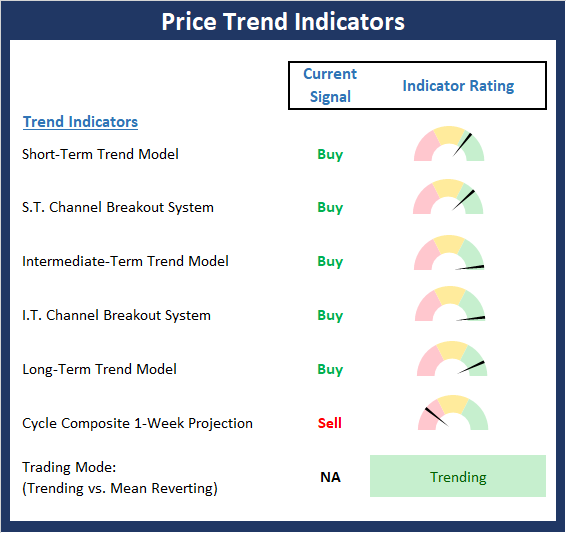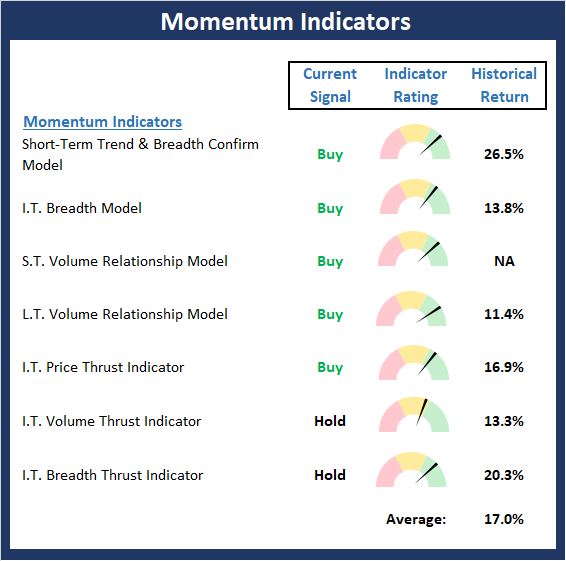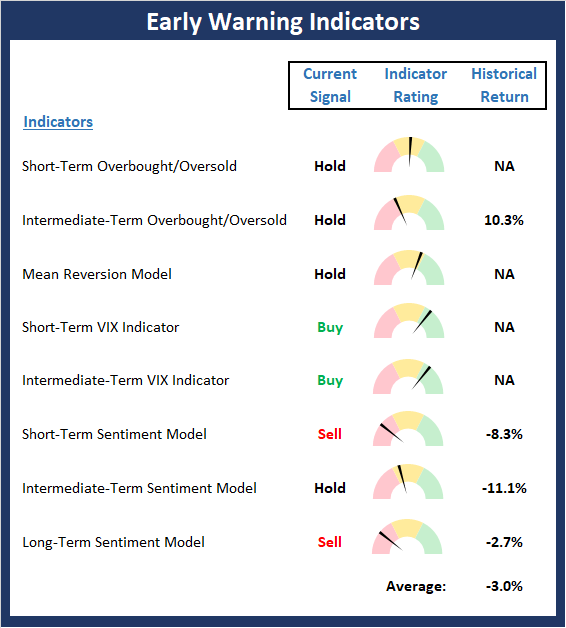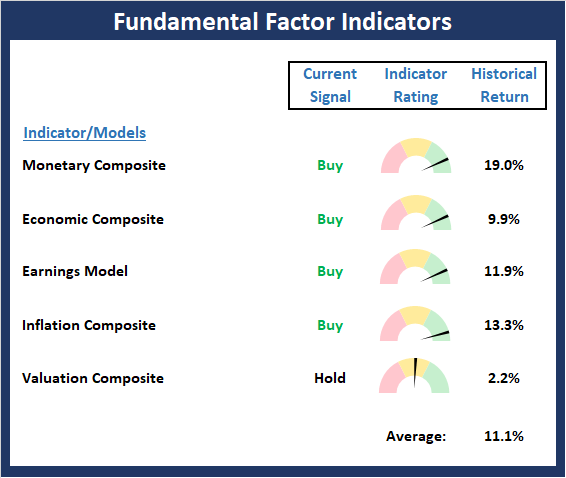It was a very busy week/weekend as I first attended NAAIM's (National Association of Active Investment Managers) annual conference. The conference was stellar, and it was great to hang out with so many like-minded investment professionals Sunday through Wednesday.
I picked up some trading psychology tips from Brett Steenbarger, PhD, who was at one time, a real-world Wendy Rhoades for Paul Tudor Jones' shop. One of Steenbarger's major points on the markets was that understanding the psychology of key market participants is critical these days. I found his insight and approach valuable and plan on following his musings on a regular basis at TraderFeed.
For example, Steenbgarger provided some interesting insight into what hedge fund managers are thinking right now. Supporting some of Marko Kolanovic's work that I have detailed recently, Steenbarger suggested that hedge fund managers have missed a fair amount of this year's joyride to the upside and are now busy playing catch up.
Hedgies Trying to Catch Up
Dr. Brett says the hedgies are playing the usual "mo-mo" game in order to attempt to close the performance gap. As you might suspect, this implies chasing the momentum names and "allocating more capital to the winners."
The problem, Steenberger opines, is that hedge fund managers were late to the game and as such, can't afford to take losses/give back gains. This suggests that the hedgies could become the "weak hands" in any meaningful decline. The idea is with hedge fund managers being quick to pull the trigger on the sell side, any downside action in the near-term could become exaggerated.
Another way to look at this situation (my opinion, not Steenbarger's) is "the chase" could keep on keepin' on until (a) the hedgie money gets put to work, (b) the hedgies catch up, or (c) the game changes (it always does at some point!).
From my seat, this means that if the "Sell in May" crowd can't get something besides a one-day wonder going soon, the slow "melt" higher could continue. As long-time stock market players know, Ms. Market often does her level best to frustrate the masses. So, with everybody and their uncle looking for a dip to buy (a strategy I wholeheartedly endorse, btw), an "easy" entry point may not make itself available.
This idea makes this morning's action all the more interesting to watch. To be sure a "dip" will occur on Trump's latest round of threats toward China. However, most investors still expect a deal to get done. And if this narrative continues, the question is when the dip will be bought, not if.
Top Reasons For Investor "Failure"
Another strong part of Dr. Steenbarger's presentation was his top three reasons for what he called "investor failure." In his world, the term "failure" isn't about "blowing up" or losing all your capital. No, it's about failing to perform on a consistent basis.
Cutting to the chase, the former trading psychologist for Tudor Jones says the following are the primary reasons investors (of all colors, shapes, and sizes) fail to perform:
- Inability to Adapt to Changing Market Environments
- Consensus Thinking
- Lack of Strategy Diversification
Given that I've been preaching flexibility, adaptation, and the need to identify/understand the market environment for a couple decades, Steenbarger's explanation of the first bullet point certainly rang true with me.
As did bullet point number three. Steenbarger's insistence that investors utilize multiple strategies fit well into the panel discussion I moderated entitled, "You're Doing It All Wrong - Modern Portfolio Design for Modern Markets."
My presentation and panel discussion espoused the importance of diversifying by investing methodology (Ex: Passive, Strategic, Tactical, Equity Selection and Alts), by investing strategy, by manager, and by time frame. A song that I've been singing for many years now and for which I earned the nickname "The Right Reverend" (as in The Right Reverend of the Church of Portfolio Diversification) at the shop I was with from 2015 through 2017.
For me, the insights from Dr. Steenbarger were well worth the price of admission to the NAAIM conference. However, I also found the global macro presentation from George Pearkes of value. Bespoke's Chief Global Strategist suggested that cyclicals are the place to be right now, which certainly goes against the general consensus thinking that we are late in the bull/economic cycle. Give this some thought during your next period of "quiet time" that Dr. Brett suggests all managers should include in their daily routine.
Finally, NAAIM's Shark Tank Investing Strategy Competition Finals was a highlight of the conference for me. My friend Len Fox of Scarecrow Trading become the organization's first two-time winner. Apparently the audience still enjoys his aggressive approach and big numbers. Second place went to Copperwynd Financial as the live track record of David Daughtrey and David Varadi's CW Livermore Momentum stock selection method got folks' attention.
On to St. Louis
Then it was on to St. Louis late Wednesday night so that I could join the family in watching my oldest defend her PhD dissertation and become Dr. Amy Boland!
I am proud to say her presentation was impressive and her defense was flawless. Yes, yes, I might be a bit jaded here, but her defense board - i.e. the "opposing counsel" - termed the work "an impressive piece of scholarship" and passed her defense "with distinction."
From there it was time to play, play, play with our grandson (my wife and I kicked the youngins out on Saturday night so we could babysit) and spend some quality family time in St. Louis.
Of course, on Sunday it was time for Billions and GOT. So, it's been a packed weekend to say the least. I'm actually looking forward to getting back in the saddle and returning to my market routine, if for nothing else, to get some rest!
Weekly Market Model Review
Now let's turn to the weekly review of my favorite indicators and market models...
The State of the Big-Picture Market Models
I like to start each week with a review of the state of my favorite big-picture market models, which are designed to help me determine which team is in control of the primary trend.

View My Favorite Market Models Online
The Bottom Line:
- The Primary Cycle board remains in good shape. This tells us to expect any market weakness to be short, shallow and temporary. Bottom line: This remains a "buy the dip" environment.
This week's mean percentage score of my 6 favorite models slipped to 83.9% from 84.7% last week (Prior readings: 74.6%, 58.0%, 49.5%, 47%, 50%, 47.9%) while the median held steady at 86.7% from 86.7% last week (Prior readings: 81.8%, 65.9%, 50%, 50%, 50%, 50%, 50%).
The State of the Trend
Once I've reviewed the big picture, I then turn to the "state of the trend." These indicators are designed to give us a feel for the overall health of the current short- and intermediate-term trend models.

View Trend Indicator Board Online
The Bottom Line:
- As the saying goes, all good things must come to an end. Such is the case with the Price Trend Board's streak of perfect 10 readings. It was the Cycle Composite, which now points lower for a couple weeks, that spoiled the fun. Thus, it wouldn't be surprising to see the recent sloppy action continue for a while. However, the recent strength of the market indicators suggests that any dips are likely to continue to be bought.
The State of Internal Momentum
Next up are the momentum indicators, which are designed to tell us whether there is any "oomph" behind the current trend.

View Momentum Indicator Board Online
The Bottom Line:
- The Momentum board remains in good shape overall, but it is clear that some of the indicators are starting to wobble a bit. While it is true that "Weebles wobble but they don't fall down," it is worth noting that the volume relationship indicators leave plenty to be desired here and both U.S. and Global Breadth models are starting to show signs of weakening. And while this situation is easily rectified, risk managers need to be paying attention.
The State of the "Trade"
We also focus each week on the "early warning" board, which is designed to indicate when traders might start to "go the other way" -- for a trade.

View Early Warning Indicator Board Online
The Bottom Line:
- The message from the Early Warning board continues to be the equivalent of yellow flag being waved. The bottom line is the odds of some kind of a pullback/corrective action remain high.
The State of the Macro Picture
Now let's move on to the market's fundamental factors - the indicators designed to tell us the state of the big-picture market drivers including monetary conditions, the economy, inflation, and valuations.

View Fundamental Indicator Board Online
The Bottom Line:
- Although there were no overt changes to the Fundamentals board this week, there were some modest improvements to three underlying models. First, one of the monetary composite component models improved. Second, one of the economic model components upticked. And finally, one of the valuation model components peeked its head into positive territory. Thus, we will continue to suggest that the Fundamental board favors the bulls and that this remains a buy-the-dip market.
Thought For The Day:
The real voyage of discovery consists not in seeking new lands but seeing with new eyes. - Marcel Proust
Wishing you green screens and all the best for a great day,

David D. Moenning
Founder, Chief Investment Officer
Heritage Capital Research
HCR Focuses on a Risk-Managed Approach to Investing
What Risk Management Can and Cannot Do
HCR Awarded Top Honors in 2018 NAAIM Shark Tank Portfolio Strategy Competition
Each year, NAAIM (National Association of Active Investment Managers) hosts a competition to identify the best actively managed investment strategies. In April, HCR's Dave Moenning took home first place for his flagship risk management strategy.
<hr>Disclosures
At the time of publication, Mr. Moenning held long positions in the following securities mentioned: None - Note that positions may change at any time.
Leading Indicators Model: A group of indicators that have historically shown tendencies to lead the market at major turning points.
Intermediate-Term Market Model: A composite model (model of models) focused on trend and momentum indicators which has been designed to provide identify intermediate-term trading opportunities.
Risk/Reward Model: A model-of-models intended to provide an overall view of the state of the risk/reward environment. The model includes tape, monetary, and sentiment indicators as well as 7 big-picture market model readings.
Desert Island Model: If I was stranded on a desert island with access to only one market model to manage money with, this would be the model. The model is a comprehensive model-of-models comprised of trend, momentum, mean reversion, economic, monetary, sentiment, and factor-based indicators/models.
External Factors Model: A model-of-models designed to provide a reading on the "macro state" of the market environment. The model is comprised of indicators/models in the areas of various index yields, industrial production, investors sentiment, and historic volatility.
Short-Term Trend-and-Breadth Signal Explained: History shows the most reliable market moves tend to occur when the breadth indices are in gear with the major market averages. When the breadth measures diverge, investors should take note that a trend reversal may be at hand. This indicator incorporates NDR's All-Cap Dollar Weighted Equity Series and A/D Line. From 1998, when the A/D line is above its 5-day smoothing and the All-Cap Equal Weighted Equity Series is above its 25-day smoothing, the equity index has gained at a rate of +32.5% per year. When one of the indicators is above its smoothing, the equity index has gained at a rate of +13.3% per year. And when both are below, the equity index has lost +23.6% per year.
Channel Breakout System Explained: The short-term and intermediate-term Channel Breakout Systems are modified versions of the Donchian Channel indicator. According to Wikipedia, "The Donchian channel is an indicator used in market trading developed by Richard Donchian. It is formed by taking the highest high and the lowest low of the last n periods. The area between the high and the low is the channel for the period chosen."
Intermediate-Term Trend-and-Breadth Signal Explained: This indicator incorporates NDR's All-Cap Dollar Weighted Equity Series and A/D Line. From 1998, when the A/D line is above its 45-day smoothing and the All-Cap Equal Weighted Equity Series is above its 45-day smoothing, the equity index has gained at a rate of +17.6% per year. When one of the indicators is above its smoothing, the equity index has gained at a rate of +6.5% per year. And when both are below, the equity index has lost -1.3% per year.
Cycle Composite Projections: The cycle composite combines the 1-year Seasonal, 4-year Presidential, and 10-year Decennial cycles. The indicator reading shown uses the cycle projection for the upcoming week.
Trading Mode Indicator: This indicator attempts to identify whether the current trading environment is "trending" or "mean reverting." The indicator takes the composite reading of the Efficiency Ratio, the Average Correlation Coefficient, and Trend Strength models.
Volume Relationship Models: These models review the relationship between "supply" and "demand" volume over the short- and intermediate-term time frames.
Price Thrust Model Explained: This indicator measures the 3-day rate of change of the Value Line Composite relative to the standard deviation of the 30-day average. When the Value Line's 3-day rate of change have moved above 0.5 standard deviation of the 30-day average ROC, a "thrust" occurs and since 2000, the Value Line Composite has gained ground at a rate of +20.6% per year. When the indicator is below 0.5 standard deviation of the 30-day, the Value Line has lost ground at a rate of -10.0% per year. And when neutral, the Value Line has gained at a rate of +5.9% per year.
Volume Thrust Model Explained: This indicator uses NASDAQ volume data to indicate bullish and bearish conditions for the NASDAQ Composite Index. The indicator plots the ratio of the 10-day total of NASDAQ daily advancing volume (i.e., the total volume traded in stocks which rose in price each day) to the 10-day total of daily declining volume (volume traded in stocks which fell each day). This ratio indicates when advancing stocks are attracting the majority of the volume (readings above 1.0) and when declining stocks are seeing the heaviest trading (readings below 1.0). This indicator thus supports the case that a rising market supported by heavier volume in the advancing issues tends to be the most bullish condition, while a declining market with downside volume dominating confirms bearish conditions. When in a positive mode, the NASDAQ Composite has gained at a rate of +38.3% per year, When neutral, the NASDAQ has gained at a rate of +13.3% per year. And when negative, the NASDAQ has lost at a rate of -14.279% per year.
Breadth Thrust Model Explained: This indicator uses the number of NASDAQ-listed stocks advancing and declining to indicate bullish or bearish breadth conditions for the NASDAQ Composite. The indicator plots the ratio of the 10-day total of the number of stocks rising on the NASDAQ each day to the 10-day total of the number of stocks declining each day. Using 10-day totals smooths the random daily fluctuations and gives indications on an intermediate-term basis. As expected, the NASDAQ Composite performs much better when the 10-day A/D ratio is high (strong breadth) and worse when the indicator is in its lower mode (weak breadth). The most bullish conditions for the NASDAQ when the 10-day A/D indicator is not only high, but has recently posted an extreme high reading and thus indicated a thrust of upside momentum. Bearish conditions are confirmed when the indicator is low and has recently signaled a downside breadth thrust. In positive mode, the NASDAQ has gained at a rate of +22.1% per year since 1981. In a neutral mode, the NASDAQ has gained at a rate of +14.5% per year. And when in a negative mode, the NASDAQ has lost at a rate of -6.4% per year.
Short-Term Overbought/sold Indicator: This indicator is the current reading of the 14,1,3 stochastic oscillator. When the oscillator is above 80 and the %K is above the %D, the indicator gives an overbought reading. Conversely, when the oscillator is below 20 and %K is below its %D, the indicator is oversold.
Intermediate-Term Overbought/sold Indicator: This indicator is a 40-day RSI reading. When above 57.5, the indicator is considered overbought and wnen below 45 it is oversold.
Mean Reversion Model: This is a diffusion model consisting of five indicators that can produce buy and sell signals based on overbought/sold conditions.
VIX Indicator: This indicators looks at the current reading of the VIX relative to standard deviation bands. When the indicator reaches an extreme reading in either direction, it is an indication that a market trend could reverse in the near-term.
Short-Term Sentiment Indicator: This is a model-of-models composed of 18 independent sentiment indicators designed to indicate when market sentiment has reached an extreme from a short-term perspective. Historical analysis indicates that the stock market's best gains come after an environment has become extremely negative from a sentiment standpoint. Conversely, when sentiment becomes extremely positive, market returns have been subpar.
Intermediate-Term Sentiment Indicator: This is a model-of-models composed of 7 independent sentiment indicators designed to indicate when market sentiment has reached an extreme from a intrmediate-term perspective. Historical analysis indicates that the stock market's best gains come after an environment has become extremely negative from a sentiment standpoint. Conversely, when sentiment becomes extremely positive, market returns have been subpar.
Long-Term Sentiment Indicator: This is a model-of-models composed of 6 independent sentiment indicators designed to indicate when market sentiment has reached an extreme from a long-term perspective. Historical analysis indicates that the stock market's best gains come after an environment has become extremely negative from a sentiment standpoint. Conversely, when sentiment becomes extremely positive, market returns have been subpar.
Absolute Monetary Model Explained: The popular cliche, "Don't fight the Fed" is really a testament to the profound impact that interest rates and Fed policy have on the market. It is a proven fact that monetary conditions are one of the most powerful influences on the direction of stock prices. The Absolute Monetary Model looks at the current level of interest rates relative to historical levels and Fed policy.
Relative Monetary Model Explained: The "relative" monetary model looks at monetary indicators relative to recent levels as well as rates of change and Fed Policy.
Economic Model Explained: During the middle of bull and bear markets, understanding the overall health of the economy and how it impacts the stock market is one of the few truly logical aspects of the stock market. When our Economic model sports a "positive" reading, history (beginning in 1965) shows that stocks enjoy returns in excess of 21% per year. Yet, when the model's reading falls into the "negative" zone, the S&P has lost nearly -25% per year. However, it is vital to understand that there are times when good economic news is actually bad for stocks and vice versa. Thus, the Economic model can help investors stay in tune with where we are in the overall economic cycle.
Inflation Model Explained: They say that "the tape tells all." However, one of the best "big picture" indicators of what the market is expected to do next is inflation. Simply put, since 1962, when the model indicates that inflationary pressures are strong, stocks have lost ground. Yet, when inflationary pressures are low, the S&P 500 has gained ground at a rate in excess of 13%. The bottom line is inflation is one of the primary drivers of stock market returns.
Valuation Model Explained: If you want to get analysts really riled up, you need only to begin a discussion of market valuation. While the question of whether stocks are overvalued or undervalued appears to be a simple one, the subject is actually extremely complex. To simplify the subject dramatically, investors must first determine if they should focus on relative valuation (which include the current level of interest rates) or absolute valuation measures (the more traditional readings of Price/Earnings, Price/Dividend, and Price/Book Value). We believe that it is important to recognize that environments change. And as such, the market's focus and corresponding view of valuations are likely to change as well. Thus, we depend on our Valuation Models to help us keep our eye on the ball.
<hr>Disclosures
The opinions and forecasts expressed herein are those of Mr. David Moenning and may not actually come to pass. Mr. Moenning's opinions and viewpoints regarding the future of the markets should not be construed as recommendations. The analysis and information in this report is for informational purposes only. No part of the material presented in this report is intended as an investment recommendation or investment advice. Neither the information nor any opinion expressed constitutes a solicitation to purchase or sell securities or any investment program.
Any investment decisions must in all cases be made by the reader or by his or her investment adviser. Do NOT ever purchase any security without doing sufficient research. There is no guarantee that the investment objectives outlined will actually come to pass. All opinions expressed herein are subject to change without notice. Neither the editor, employees, nor any of their affiliates shall have any liability for any loss sustained by anyone who has relied on the information provided.
Mr. Moenning may at times have positions in the securities referred to and may make purchases or sales of these securities while publications are in circulation. Positions may change at any time.
The analysis provided is based on both technical and fundamental research and is provided "as is" without warranty of any kind, either expressed or implied. Although the information contained is derived from sources which are believed to be reliable, they cannot be guaranteed.
Investments in equities carry an inherent element of risk including the potential for significant loss of principal. Past performance is not an indication of future results.
Recent free content from FrontRange Trading Co.
-
 Is The Bull Argument Too Easy These Days?
— 8/31/20
Is The Bull Argument Too Easy These Days?
— 8/31/20
-
 What Do The Cycles Say About 2020?
— 1/21/20
What Do The Cycles Say About 2020?
— 1/21/20
-
 Modeling 2020 Expectations (Just For Fun)
— 1/13/20
Modeling 2020 Expectations (Just For Fun)
— 1/13/20
-
 The Best Recession Ever!
— 4/29/19
The Best Recession Ever!
— 4/29/19
-
 Is "Melt-Up" The Operative Word?
— 4/22/19
Is "Melt-Up" The Operative Word?
— 4/22/19
-
{[comment.author.username]} {[comment.author.username]} — Marketfy Staff — Maven — Member



